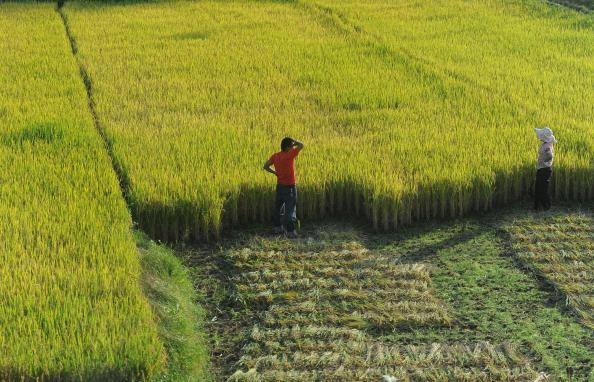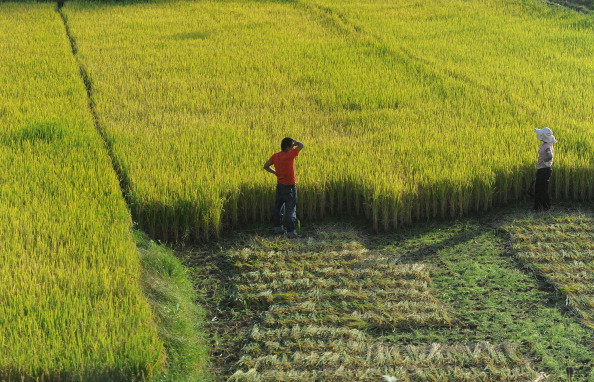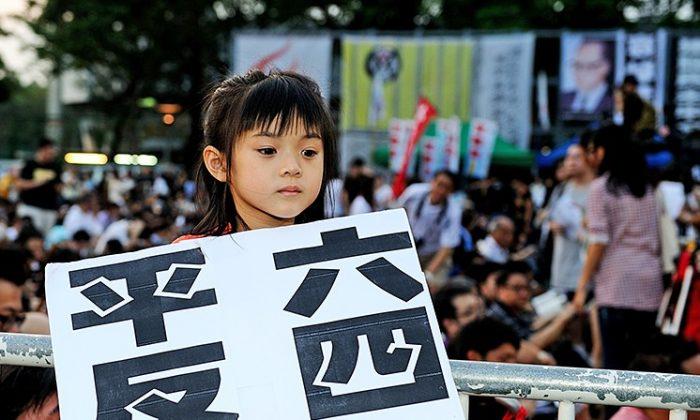Unsustainable farming practices are depleting the ability of China’s arable land to grow food, and as conditions worsen the Chinese food supply could soon feel the impact. This situation was outlined by statistics from the Chinese Ministry of Land and Resources, which were cited by Xinhua news agency’s Economic Information newspaper.
One of the areas most seriously impacted is a major fertile region, the Northeastern Chernozem Region. The Russian term, “chernozem,” literally means “black earth,” and is the name for a type of black-colored soil containing around 10 percent of organic matter, such as humus, phosphoric acids, and ammonia, which makes the soil highly fertile.
The Northeastern Chernozem Region, stretching more than 87 million acres, is spread over the northeastern provinces of Heilongjiang, Jilin, Liaoning, and Inner Mongolia. The region produces more than 30 percent of the grains sold in China and supplies most of the nation’s rice and corn, according to China’s Ministry of Land and Resources.
In the past, a local saying said the land was so rich that if you “take a pinch of the soil, you will see oil, plant a pair of chopsticks and you will get sprouts.”
Due to unsustainable farming and lack of care, fertile black soil in the Northeastern Chernozem Region decreased from more than three feet deep in the 1960s to around nine inches deep now. The soil is also becoming less fertile. Organic matter in the soil dropped from 12 percent to 2 percent, and 85 percent of soil in the region now lacks nutrients, according to a Xinhua article cited by the Ministry of Land and Resources.
“Before I could see black soil after shoveling twice, but now, only after shoveling once there is no more black soil,” Cheng Xianli, a farmer who resides in Heilongjiang, told Economic Information.
It takes close to 100 years to form just over half an inch of the black soil, and it would take China close to 1,000 years to bring the Northeastern Chernozem Region back to its former state, Hu Ruixuan, head of the Soil and Fertilizer Management Station of Heilongjiang Province, told Economic Information.
Hu added that at this rate, the region’s black soil will completely disappear in a few dozen years.
“The thinning of black soil means that its most fertile layer, the topsoil, is thinning. The direct result is a decrease in soil fertility and further food production due to lack of organic matter,” said Han Xiaozeng, an expert in Northeastern Chinese geography and resources from the Chinese Academy of Sciences to Economic Information. Han added that the conditions will affect the security of food supplies in the nation.
A study by the Graduate School of the Chinese Academy of Science found that over-fertilization is the main cause of the damage. When China underwent economic reform in the 1980s, many market-driven agricultural enterprises were started under supervision of the township and village governments. They raised requirements for food production, and as a result, farmers increased their use of pesticides and fertilizers, which harmed not only the soil, but also the quality of grains.
The Epoch Times publishes in 35 countries and in 19 languages. Subscribe to our e-newsletter.





